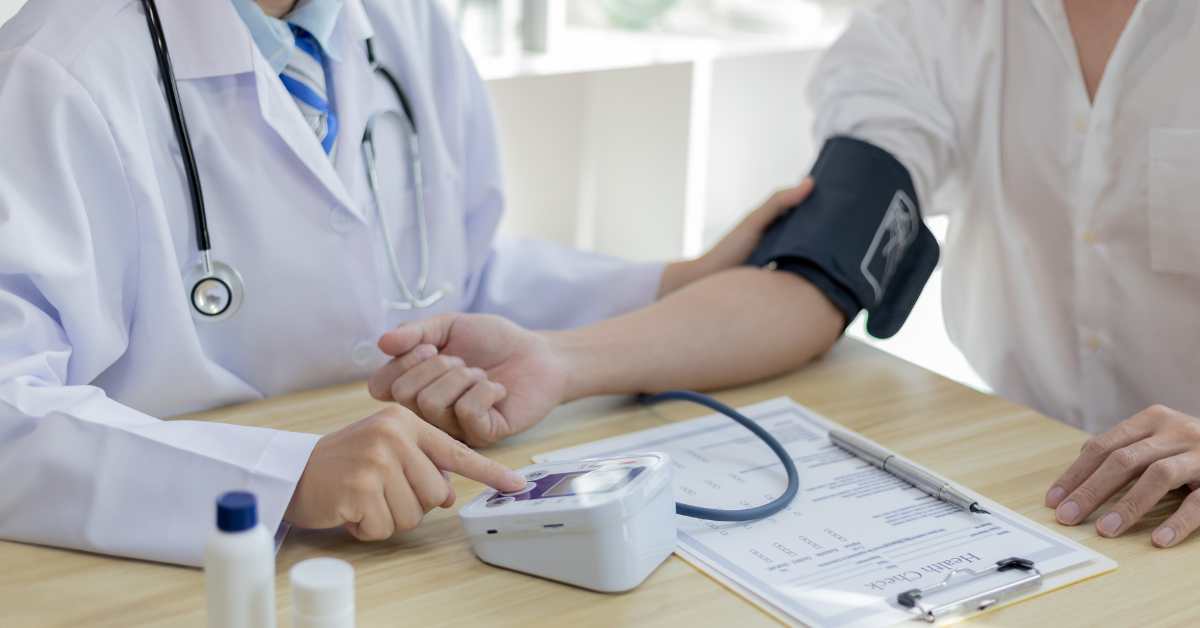Medical imaging techniques like X-rays, CT scans, and PET scans are tools that help doctors get a clear picture of what’s going on inside the body, making it easier to diagnose and treat health concerns effectively. However, these imaging technologies expose the body to low doses of ionizing radiation, which can lead to oxidative stress, and many parents rightfully feel concerned about the effects of x-rays or other medical imaging techniques on their child’s body. This article aims to help parents understand how radiation affects the body and provides some actionable tips to aid the body in its natural detoxification processes.
How Radiation From X-Rays, CT Scans, and PET Scans Affect the Body
X-rays or CT scans are common for issues like suspected broken bones, dental care, chest infections, and abdominal pain. X-rays, CT scans, and PET scans work by passing high-energy waves or particles through the body to create detailed images (1). This ionizing radiation interacts with the atoms in cells and can generate free radicals (2) — unstable molecules that may interact with cellular structures like DNA, proteins, and cell membranes. While the body has natural repair mechanisms to address such damage (3), a proactive approach can support these mechanisms in working at their best (3).
Understanding The Exposure Amount Per Scan
It’s important to put radiation exposure from X-rays and CT scans into perspective. The amount of radiation your child is exposed to during a single imaging procedure is typically low and carefully calculated to minimize risk while providing clear diagnostic results. For instance, a standard pediatric chest X-ray exposes the body to about 0.01 millisieverts (mSv) of radiation (4), roughly equivalent to the amount of background radiation naturally encountered over 1 day (4).
CT scans are more detailed and therefore involve higher doses. For example, a pediatric abdominal CT scan may expose the body to 20 months’ worth of natural background radiation (4).
Understanding that the X-ray your doctor orders for your child’s one-time medical concern, such as a suspected broken bone or a dental issue, is unlikely to contribute significantly to their overall toxic load can help put your mind at ease. However, if your child’s situation involves repeated imaging, or they are undergoing higher-dose procedures like a CT or PET scan, having a plan to support their body afterward can provide an extra layer of reassurance that you are doing all you can to support your child’s wellbeing.
Detoxing From Medical Radiation
When it comes to supporting the body post-scans, I focus on evidence-backed strategies that support cellular health and help the body manage oxidative stress, and I like to add in some homeopathy and clay baths, too.
Melatonin
Melatonin is widely recognized for its role in supporting sleep onset, but its powerful antioxidant properties are less well known. Research shows that melatonin helps neutralize free radicals and supports mitochondria repair processes (6). An interesting study demonstrated that melatonin reduced radiation-induced DNA damage in human cells (7). Foods like tart cherries, walnuts, and kiwis naturally contain melatonin, or you can explore supplementation. In my practice, if a patient needs frequent scans, we sometimes discuss high dose melatonin supplementation on the morning of the scans, but this is not something I recommend exploring without guidance from a knowledgeable practitioner, and it is not something I believe to be necessary for a single x-ray.
To learn more about melatonin, read these articles: Top Seven Reasons Why I Prescribe Melatonin In My Integrative Medicine Practice and Melatonin Rich Food Sources & Bedtime Snacks.
Plant Polyphenols
Polyphenols are naturally occurring compounds found in plants that have been studied for their potential to support the body’s antioxidant and inflammatory response systems. Polyphenols have been shown to support the body’s ability to combat oxidative stress and to support innate cellular repair mechanisms. Some of my top choices for polyphenols include:
- Anthocyanins, found abundantly in elderberries, is a polyphenol that has been studied for its ability to protect from radiation induced damages (8).
- Quercetin, abundant in apples, onions, and cranberries, supports healthy DNA function and helps reduce inflammation (9).
- Green Tea Catechins, such as epigallocatechin gallate (EGCG), promote antioxidant activity and aid cellular recovery (10,11).
To learn more about antioxidants, read: Everything You Need To Know About Antioxidants, and to learn more about supporting a healthy inflammatory response, read: Understanding & Supporting A Healthy Inflammatory Response.
Chlorella
Chlorella, a chlorophyll-rich freshwater algae, is a favorite for its ability to support the body’s detoxification pathways by binding to toxins, including heavy metals, and aiding in their safe removal (12). Additionally, its high concentration of antioxidants helps combat oxidative stress and supports cellular recovery (12).
Black Seed Oil
Black seed oil (Nigella sativa) has a long history of use in traditional wellness practices (13). Its active compound, thymoquinone, is a powerful antioxidant that supports the body’s ability to manage oxidative stress (13). Research suggests black seed oil may help protect cells and enhance resilience after exposure to environmental stressors (14).
Bentonite Clay Baths
Bentonite clay is valued for its ability to bind to impurities and toxins (15). When dissolved in a warm bath, the negatively charged ions in bentonite clay attract positively charged particles (16). Read this article to learn how I like to prepare a bentonite clay bath. Be sure to hydrate well before and after!
Homeopathic X-ray 30c
Homeopathic remedies are believed to work by stimulating the body’s vital force to address imbalances. Homeopathy operates on the principle of “like cures like,” meaning that a substance that causes symptoms in a healthy person can, when prepared in ultra-diluted forms, support the body in overcoming similar symptoms or stressors.
The homeopathic remedy X-ray 30c is created using X-ray radiation as the original source. A carrier medium, like alcohol or lactose, is exposed to X-ray radiation under controlled conditions to produce a “mother tincture.” This is then highly diluted to imprint the energetic signature into the solution. This idea is that this energetic imprint interacts with the body at a subtle level, encouraging the natural detoxification processes and restoring balance.
To learn more about homeopathy, read these articles: How To Use Homeopathic Remedies – A Quick-Start Guide For Families and How To Create A Family Homeopathy Kit.
Foundational Tips For Supporting Cellular Health After Radiation
While supplements are helpful, it is equally important to focus on the basics. Make sure your child gets plenty of time outdoors and stays well-hydrated.
Focus on providing plenty of antioxidant-rich fruits and vegetables like berries, leafy greens, and citrus and prioritizing quality sleep, as the body does much of its healing and repair during rest.
To learn more about an anti-inflammatory lifestyle, read this article: Basics Of An Anti-Inflammatory Lifestyle.
Summary
X-rays and CT scans are important tools for diagnosing health concerns, and they allow doctors to treat patients more accurately. As parents, it’s natural to feel concerned about their effects on a child’s body. It’s important to understand that radiation exposure from x-rays is generally low, and the body has mechanisms to repair itself. That said, if you or your child need frequent scans, or are undergoing more radiation-intense scans such as CTs or PET scans, you can support the body by increasing intake of antioxidant-rich foods like berries and leafy greens; including supplements like melatonin, chlorella, and black seed oil; and focusing on staying hydrated and prioritizing sleep. For additional support, you may wish to include bentonite clay baths and homeopathic X-ray 30c.
References:
- Medical Scans Explained. (2019, October 28). Medical Scans Explained. NIH News in Health. https://newsinhealth.nih.gov/2019/11/medical-scans-explained
- Gündüz AM, Demir H, Toprak N, Akdeniz H, Demir C, Arslan A, Göya C. The effect of computed tomography on oxidative stress level and some antioxidant parameters. Acta Radiol. 2021 Feb;62(2):260-265. doi: 10.1177/0284185120922135. Epub 2020 May 12. PMID: 32397734.
- Gonçalves RV, Costa AMA, Grzeskowiak L. Oxidative Stress and Tissue Repair: Mechanism, Biomarkers, and Therapeutics. Oxid Med Cell Longev. 2021 Feb 27;2021:6204096. doi: 10.1155/2021/6204096. PMID: 33728020; PMCID: PMC7936902.
- World Health Organization. (2016). Communicating radiation risks in paediatric imaging: information to support health care discussions about benefit and risk. https://iris.who.int/bitstream/handle/10665/205033/9789241510349_eng.pdf?sequence=1
- Reiter RJ, Mayo JC, Tan DX, Sainz RM, Alatorre-Jimenez M, Qin L. Melatonin as an antioxidant: under promises but over delivers. J Pineal Res. 2016 Oct;61(3):253-78. doi: 10.1111/jpi.12360. Epub 2016 Sep 1. PMID: 27500468.
- Jafarpour SM, Shekarchi B, Bagheri H, Farhood B. The Radioprotective Effects of Melatonin and Nanoselenium on DNA Double-Strand Breaks in Peripheral Lymphocytes Caused by I-131. Indian J Nucl Med. 2021 Apr-Jun;36(2):134-139. doi: 10.4103/ijnm.IJNM_179_20. Epub 2021 Jun 21. PMID: 34385783; PMCID: PMC8320833.
- Fan ZL, Wang ZY, Zuo LL, Tian SQ. Protective effect of anthocyanins from lingonberry on radiation-induced damages. Int J Environ Res Public Health. 2012 Dec 18;9(12):4732-43. doi: 10.3390/ijerph9124732. PMID: 23249859; PMCID: PMC3546787.
- Özyurt H, Çevik Ö, Özgen Z, Özden AS, Çadırcı S, Elmas MA, Ercan F, Gören MZ, Şener G. Quercetin protects radiation-induced DNA damage and apoptosis in kidney and bladder tissues of rats. Free Radic Res. 2014 Oct;48(10):1247-55. doi: 10.3109/10715762.2014.945925. Epub 2014 Aug 14. PMID: 25039564.
- Zhu W, Xu J, Ge Y, Cao H, Ge X, Luo J, Xue J, Yang H, Zhang S, Cao J. Epigallocatechin-3-gallate (EGCG) protects skin cells from ionizing radiation via heme oxygenase-1 (HO-1) overexpression. J Radiat Res. 2014 Nov;55(6):1056-65. doi: 10.1093/jrr/rru047. Epub 2014 Jun 26. PMID: 24968709; PMCID: PMC4229913.
- Singh BN, Shankar S, Srivastava RK. Green tea catechin, epigallocatechin-3-gallate (EGCG): mechanisms, perspectives and clinical applications. Biochem Pharmacol. 2011 Dec 15;82(12):1807-21. doi: 10.1016/j.bcp.2011.07.093. Epub 2011 Jul 30. PMID: 21827739; PMCID: PMC4082721.
- Bito T, Okumura E, Fujishima M, Watanabe F. Potential of Chlorella as a Dietary Supplement to Promote Human Health. Nutrients. 2020 Aug 20;12(9):2524. doi: 10.3390/nu12092524. PMID: 32825362; PMCID: PMC7551956.
- Ferizi R, Ramadan MF, Maxhuni Q. Black Seeds (Nigella sativa) Medical Application and Pharmaceutical Perspectives. J Pharm Bioallied Sci. 2023 Apr-Jun;15(2):63-67. doi: 10.4103/jpbs.jpbs_364_22. Epub 2023 Jun 8. PMID: 37469646; PMCID: PMC10353664.
- Ahmad MF, Ahmad FA, Ashraf SA, Saad HH, Wahab S, Khan MI, Ali M, Mohan S, Hakeem KR, Athar MT. An updated knowledge of Black seed (Nigella sativa Linn.): Review of phytochemical constituents and pharmacological properties. J Herb Med. 2021 Feb;25:100404. doi: 10.1016/j.hermed.2020.100404. Epub 2020 Sep 19. PMID: 32983848; PMCID: PMC7501064.
- Moosavi M. (2017). Bentonite Clay as a Natural Remedy: A Brief Review. Iran J Public Health. Sep;46(9):1176-1183. PMID: 29026782; PMCID: PMC5632318.
- Samanta, I., & Bandyopadhyay, S. (2020). Alternative antiinfective therapy. Antimicrobial Resistance in Agriculture, 343–355. https://doi.org/10.1016/b978-0-12-815770-1.00030-4
- Omar, M., Shanableh, A., & Al Zaylaie, M. (2016). Modification of the swelling characteristics and phosphorus retention of bentonite clay using alum. Soils and Foundations, 56(5), 861–868. https://doi.org/10.1016/j.sandf.2016.08.010


